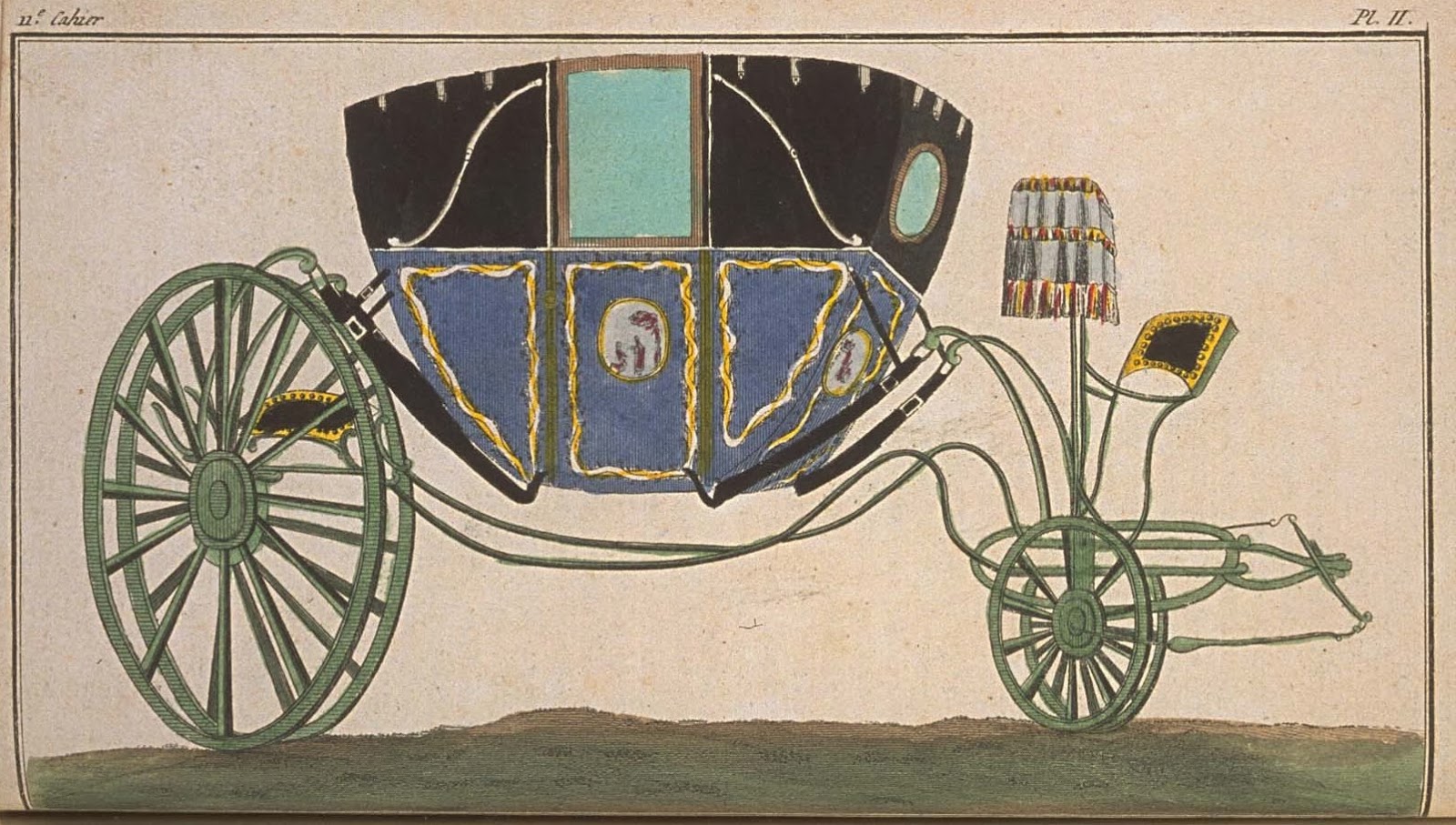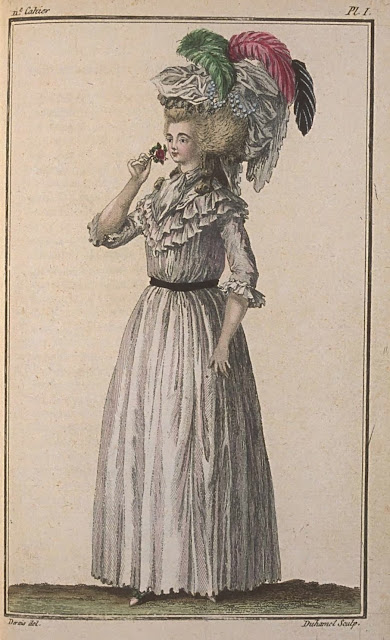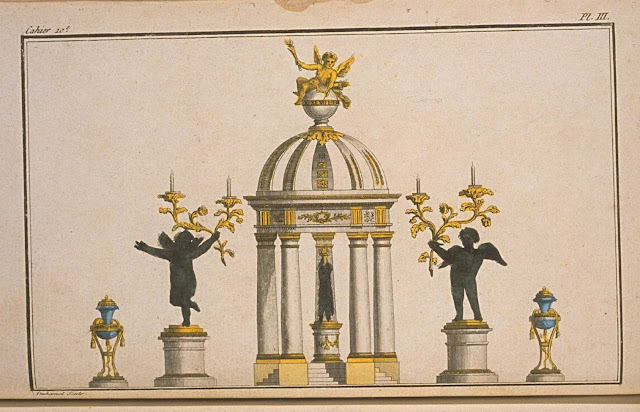Cabinet des Modes, 12e Cahier, 2e Planche

May 1, 1786 PLATE II. "Flee, go away; you are not far enough. I am, you say, under the other Tropic; pass under the Pole and into the other Hemisphere; climb to the stars, if you can. - Here I am. - Very good, you are secure: I discover on the earth a greedy, insatiable, inexorable man, who wants, at the expense of all who will be found in his path and at his meeting, and what it may cost to others, to provide for himself alone, to increase his fortune, and to abound with goods." This was said, in all the dolor of his soul, by the Philosopher whom we have cited as the authority. This turn and these sublime words, could they not be repeated today, in a very suitable manner, because of these young people who, mounted in light cabriolets, fly rather than roll on the cobblestones, and never examine what is before them, nor at their sides, how many people they are going to drive over? They may run in the roads, if there is no man in danger; they may fly in the plain, but ...










